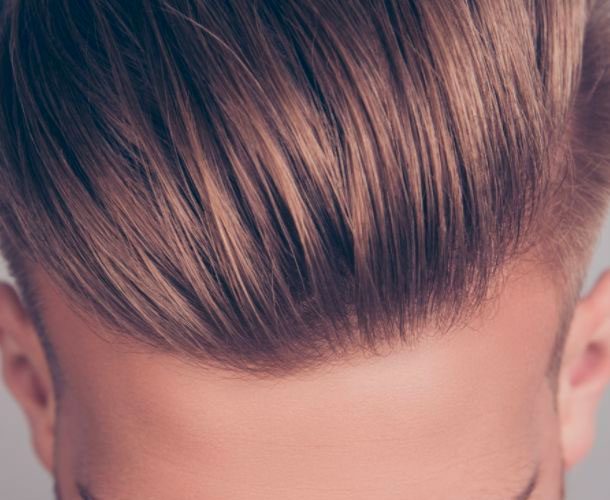News
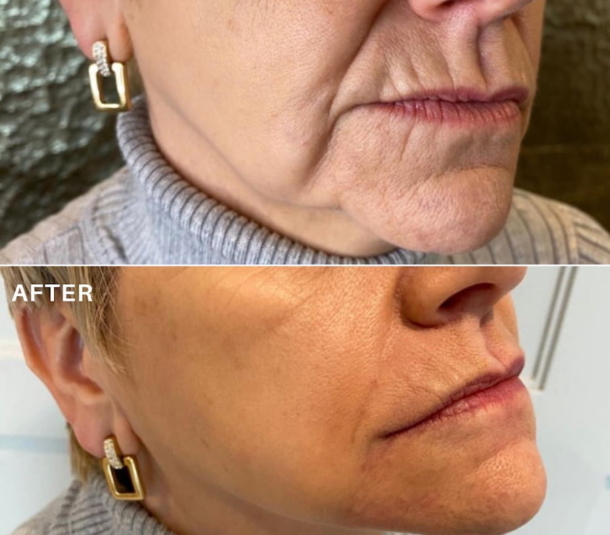
How To Tighten & Get Rid Of Sagging Jowls
30th March 2024Reviewed by Dr Nyla, (MBCHB (Hons.). MRCGP (Dist.). DFFP. DPDermatology. BACD. Last updated: 22nd January 2025.
Sagging jowls are loose skin beneath the chin caused mainly by ageing and genetics, which lead to collagen loss, though lifestyle factors such as smoking, sun damage, and rapid weight loss can make the problem worse. Treatment options range from facial exercises (which may strengthen muscles but won’t address loose skin) to non-surgical procedures like dermal fillers, Ultherapy, and laser treatments that offer visible results with minimal downtime, through to surgical options such as liposuction or neck lifts that provide dramatic results but require significant recovery time and cost. Non-surgical treatments have become popular as a middle ground, offering effective results without the expense and downtime of surgery.
As we age, many of us grapple with the common concern of sagging jowls. Loss of elasticity in the jowls can affect anyone, regardless of their exercise regimen or dietary habits, but there’s no need to simply accept it. From simple exercises to cosmetic procedures, there’s a range of options available for addressing sagging jowls to rejuvenate your appearance.
Jump to: Definition | Causes | Exercises | Non-Surgical Procedures | Cosmetic Surgery
WHAT ARE JOWLS?
Jowls are commonly used to describe the skin below the chin and jawline – specifically sagging skin that appears baggy or loose, or has lost elasticity and definition. While jowls aren’t a medical concern and aren’t harmful to the body, their appearance can be damaging to your self-esteem and confidence, often making you look older than you are. Everyone is liable to getting jowls to some extent as they age, but the severity of the problem can vary from person to person, and the age at which they develop can too.

WHAT CAUSES JOWLS TO DEVELOP?
There are a number of factors that can cause jowls to develop – some are within our control to an extent, while there are others we can’t influence. The two main causes for jowls are simply age and genetics which are sadly out of our control.
As we age, the skin in the cheeks and below the jawline is prone to losing the collagen and elastin which are produced naturally in the body. Both of these proteins work to create elasticity in the skin, connecting it to tissue and helping it spring back into shape as we move.
Our jowls become more apparent as this elasticity is lost over time – with collagen and elastin depleted, the skin is less able to fight against gravity and so the skin sags and droops. Tied into this are our genetics. Some people will suffer from collagen and elastin depletion earlier than others, sometimes even as early as the teens. For others, it won’t be until decades later, well into old age.
While the impact of genetics can’t be overridden, the good news is that there are other lifestyle factors that we can control. The following all have the potential to make prominent jowls more likely:
Smoking
As with so many other conditions, smoking has a negative impact. Smoking causes blood vessels to narrow which makes it harder for the body to circulate nutrients. This dulls our skin and collagen and elastin production can also be impacted.
Sun Damage
High levels of exposure to the sun can cause premature ageing. Specifically, the ultraviolet rays can lead to reduced collagen creation. So, if you’re someone who regularly tans and doesn’t take precautions to use SPF, you could be ageing your skin faster than necessary.
Weight Loss
Weight loss, especially crash diets, can result in sagging skin all over the body, including the face. As we gain weight, the skin stretches, but losing this weight can then create a problem whereby there is excess skin, and inevitably sagging.
There are other minor factors to be mindful of, such as ‘tech neck’ – some claim that a large amount of screen time can lead to prominent jowls because of our tendency to look down for long periods of time.

Book in a free consultation with our expert team
- Over 50 non-surgical treatments and therapies
- Free consultation including tailored plan
- Luxury clinics in London, Cheshire & Liverpool
QUICK FIXES AND EXERCISES FOR SAGGING JOWLS
Naturally, many are on the lookout for a quick, easy and free solution to address their sagging jowls. In addition to tackling the contributing factors to sagging jowls we mentioned above, such as quitting smoking and minimising exposure to the sun, especially without proper sun protection, some also suggest the following exercises:
Chin Exercise
Close your mouth and push your lower jaw forward while simultaneously lifting your lower lip. Hold this position for several seconds and repeat about 20 times. This exercise aims to engage the jaw muscles and define the area.
Neck Exercise
With your head held level, keep everything else still except for your neck. Gently move your neck backwards and then forward, ensuring your jaw juts out as you move forward while keeping your head level.
It’s important to note that while exercises can help strengthen certain muscles, they may not directly address or remove loose skin, which is a primary factor in sagging jowls.
NON-SURGICAL PROCEDURES
A middle ground that many people choose is to opt for non-surgical procedures. The benefit of non-surgical treatments is that they’re quicker and more affordable than a full surgical procedure, and yet they still have a visible impact.
With a non-surgical procedure, you can also still go about your usual routines as there’s minimal, or even zero, downtime required after the procedure.
Dermal Fillers
dermal fillers are a popular option. This treatment uses an injection of hyaluronic gel to stimulate the creation of collagen and elastin, boosting the levels of these natural proteins to give the face more volume and tighten the skin. The results of expertly applied dermal fillers can be relatively long-lasting, often up to two years, which can make a profound difference to your appearance and confidence.
The examples below show the types of results that can be achieved with non-surgical procedures:
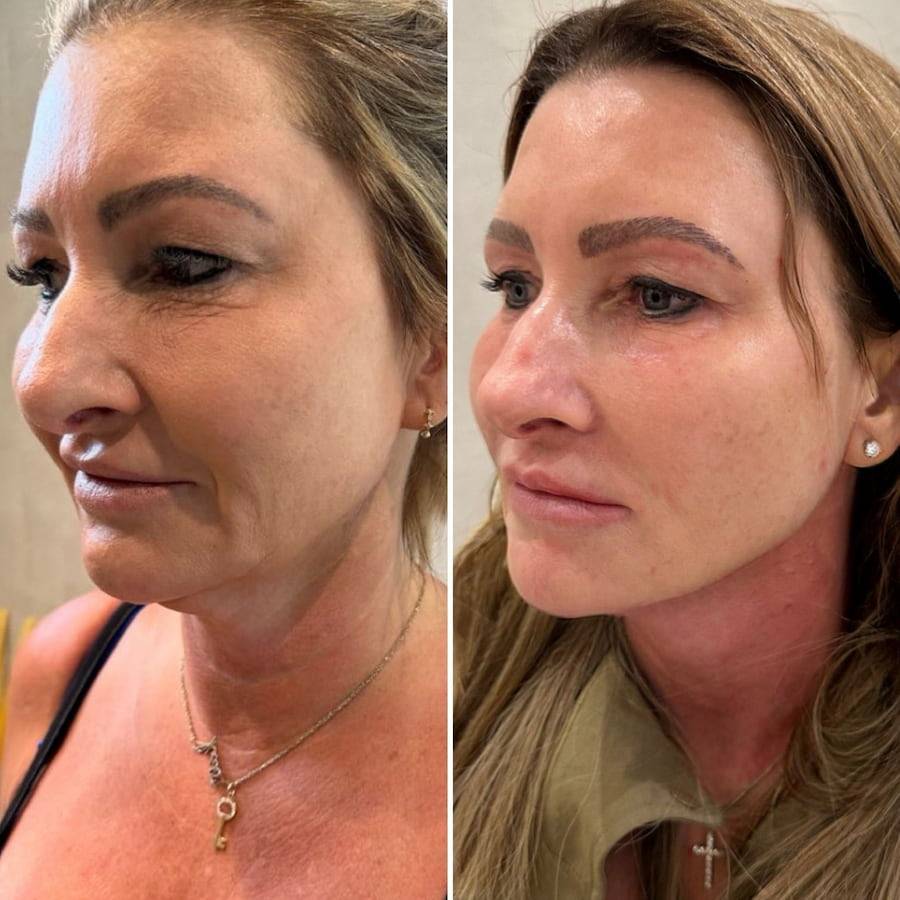
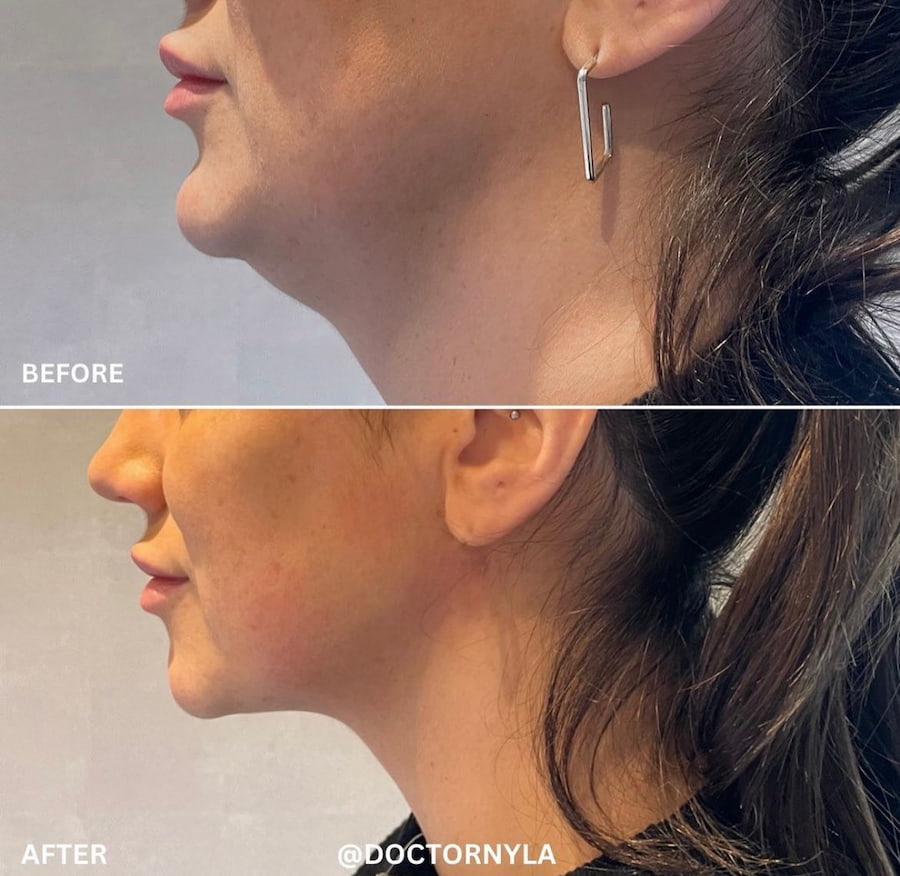
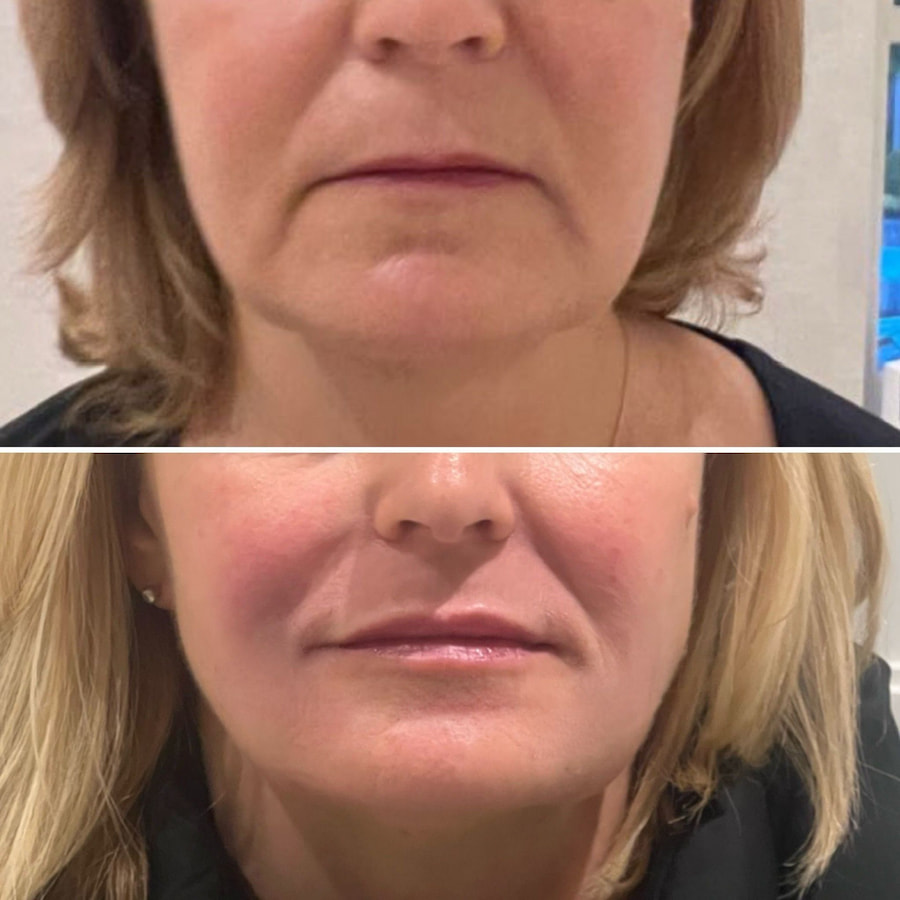
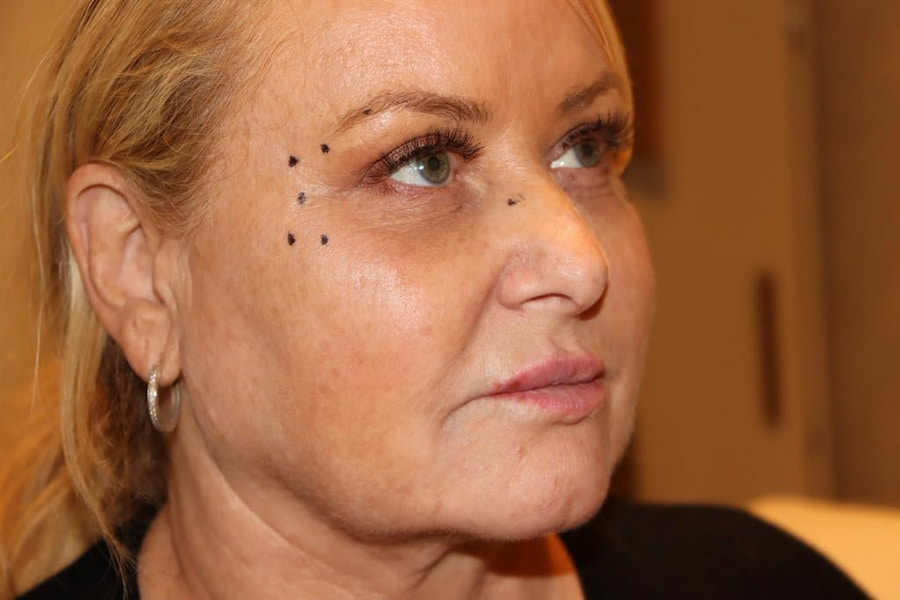
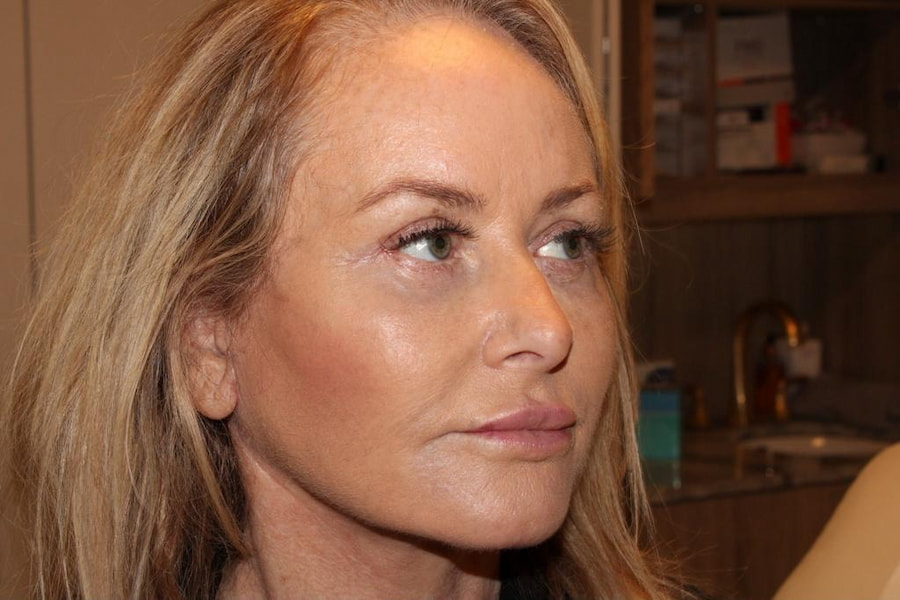
Ultherapy
Another option we recommend is Ultherapy, an FDA-approved skin restoration treatment targeting concerns such as sagging jowls. Ultherapy is loved by A-listers such as Jennifer Aniston, Gwyneth Paltrow and Kim Kardashian, and yet treatment costs start from just £400.
Ultherapy uses ultrasound so there are no incisions or injections, making it truly non-invasive and gentle on the skin. The process works by gently heating the skin in a targeted manner to stimulate collagen production. It’s a truly ground-breaking procedure that produces results in a matter of days.
ULTRAcel
A similar treatment is ULTRAcel which uses both ultrasound and radio frequency. ULTRAcel combines radio frequency and HIFU technology to penetrate the deep layers of the skin to lift and tighten, with rapid results.
Laser Skin Tightening
Laser skin tightening might also be effective. This treatment uses heat to stimulate collagen and elastin fibre production in deep layers of the skin. Modern laser treatments are far better at targeting deeper layers, without removing the surface layer, which leads to a fresh new layer of skin without the risk of scarring.
CoolSculpting
Alternatively, CoolSculpting can help reduce a double chin by using cold therapy to freeze fat cells. It doesn’t eliminate jowls, but it can be effectively combined with other non-surgical treatments to sculpt the lower face and improve your appearance.
Why not arrange a consultation with a skilled, qualified expert so we can let you know suitable options and help you to make an informed decision.
COSMETIC SURGERY
At the opposite end of the scale, there’s cosmetic surgery. This will remove the jowls and soften their appearance, which can have a profound impact on appearance and your self-esteem.
If you’re considering cosmetic surgery, you should always begin with a detailed consultation with a reputable surgeon. They’ll be able to assess the benefits of surgery and suggest the available options to you. For example, liposuction is a popular option which uses a cannula to remove fat from the chin and neck area.
This reshapes the area to help prevent future sagging. Liposuction costs thousands, is carried out under general anaesthetic and is also invasive so it takes time to recover from. Bruising and swelling should be expected post-surgery, so you’ll typically need to take some time off work to recover.
Another surgical procedure to consider would be a neck lift – potentially in conjunction with a full face lift. Similar to liposuction, fat is removed, and the muscles tightened. The remaining skin is then sewn into a more favourable position. There will be an incision, this typically close to the ears and made as discreet as possible. This treatment also usually costs more than liposuction.
Your surgeon will be in the best position to advise you on the best surgery for your needs, your budget and the amount of recovery time required.
ABOUT DR NYLA
Dr Nyla is one of the leading cosmetic dermatologists in the UK – she is trusted by many high-profile clients and her expertise makes her someone that media publications regularly seek an opinion from. Dr Nyla’s cosmetic clinic is the largest outside London and the only Diamond Clinic outside the capital.
Dr Nyla’s clinic won Top Cosmetic Clinic Award in the UK for 2019. Her testimonials are universally positive and her reviews on the independent TrustPilot site are outstanding.
If you would like to arrange a consultation or simply want further advice please contact us today using our Contact Form and we’ll respond as soon as possible.
